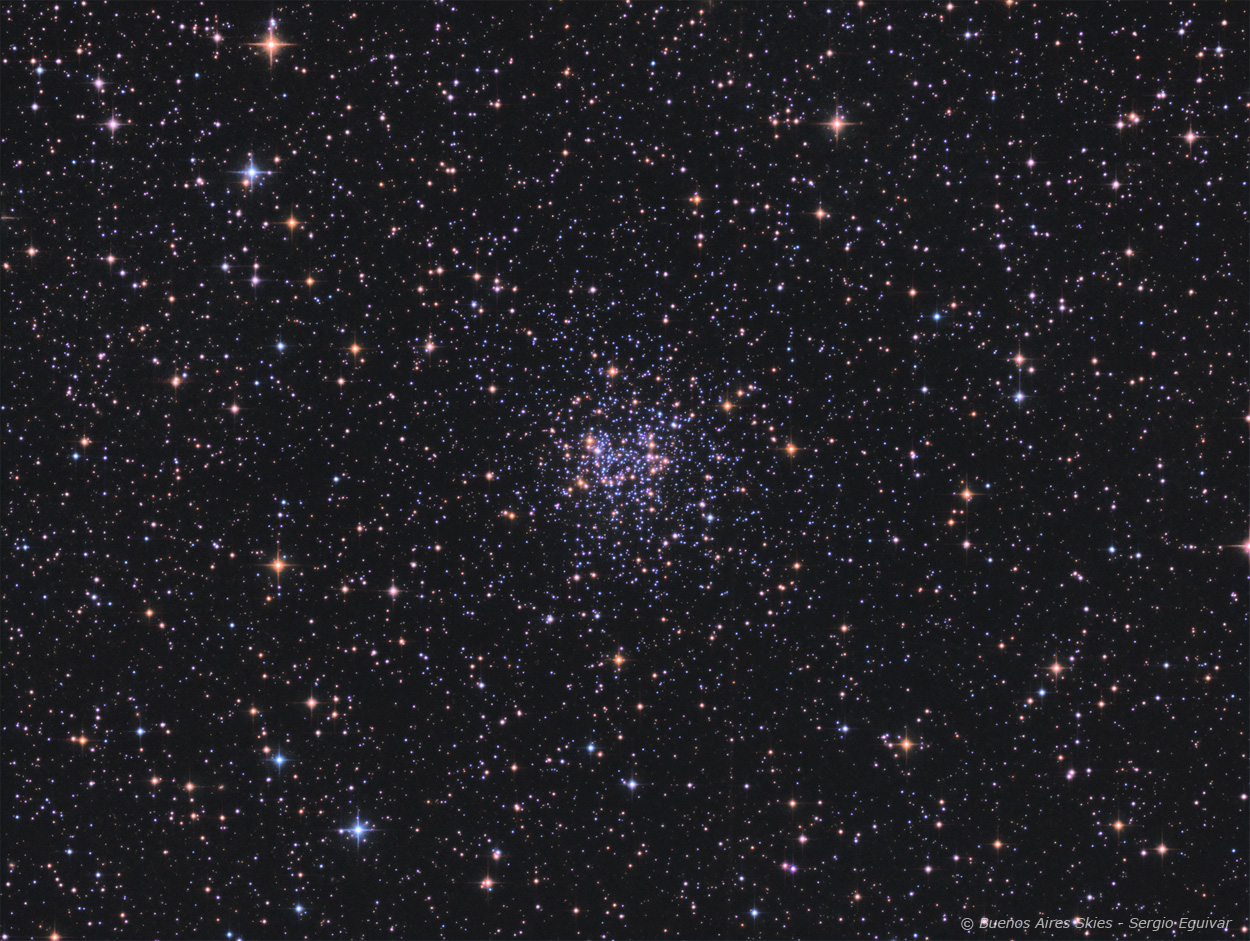
| HOME |
NGC 2506
OPEN CLUSTER IN MONOCEROS (THE UNICORN)
(Image centered at: ra 08 h:01 m / dec - 10º 49')
CLICK THE IMAGE FOR A HIGH RESOLUTION VIEW
November 2022, Home Backyard in Martínez, Buenos Aires, Argentina
DATA
TYPE: Open Cluster
APPARENT DIAMETER: 12 arc minutes
APPARENT MAGNITUDE (V): 7.6
DISTANCE: 12.700 light years
IMAGE INFORMATION
INSTRUMENT: 8" ORION OPTICS UK (Ultra Grade Optics) w/Televue Paracorr working at at f5,75
CAMERA: QSI 583 WS
MOUNT: SKY WATCHER NEQ6, OAG with Starlight Xpress Lodestar
FILTERS: Baader LRGB Set; Astronomik Ha 6nm
SKY CONDITIONS: urban skies - Bortle 8
EXPOSURES: LRGB (60,60,60,60)
OBJECT DESCRIPTION AND IMAGE SESSION
NGC 2506 (aka Melotte 80, Collinder 170 or Caldwell 54) is a quite populated and concentrated open cluster in Monoceros. 94 probable members have been identified within the field of NGC 2506 based upon their radial velocities. Compared to the Sun, the cluster is moderately metal-poor. This is an old star cluster with a calculated age of more than 1.6 billion years old. It has a number of red stars and Red Giant Branch (RGB) stars, but it also has a number of member stars that appear to be younger spectral types despite its estimated age.
Although its member stars are faint, the cluster itself appears quite bright and can be seen with a pair of binoculars. Through telescopes it's an impressive object, and of all the Monoceros open clusters it's probably the finest. It was discovered by German born British astronomer William Herschel in 1791